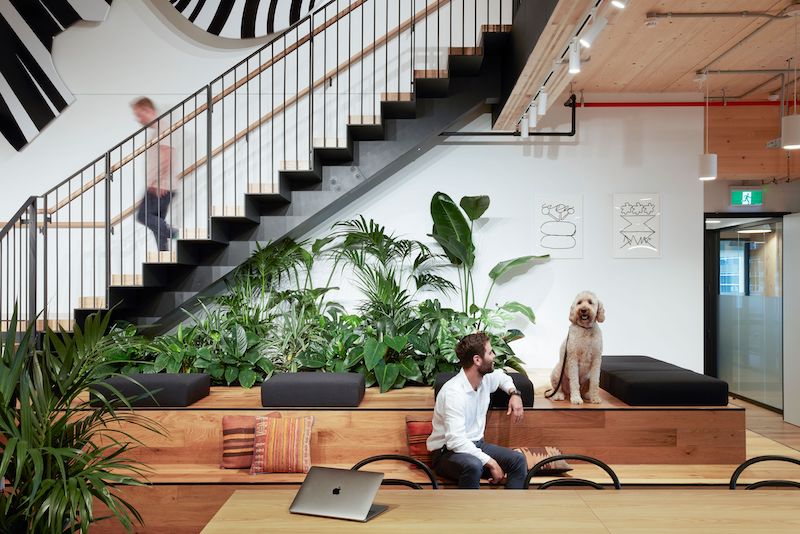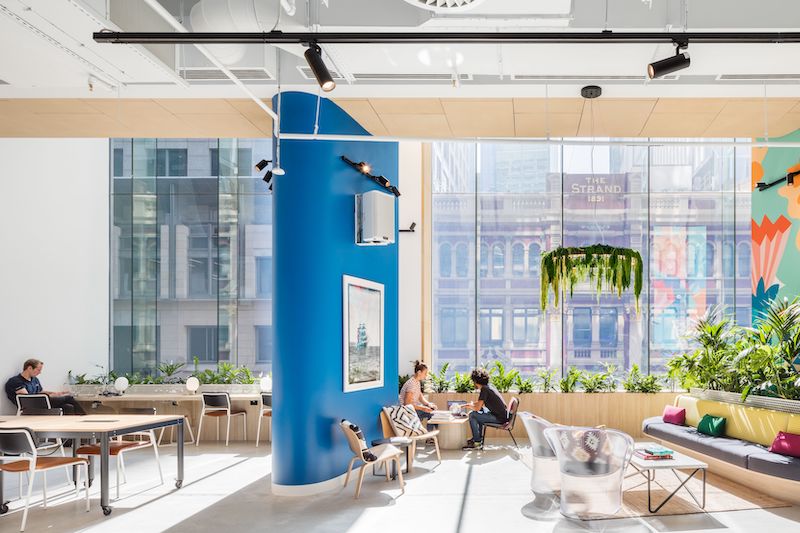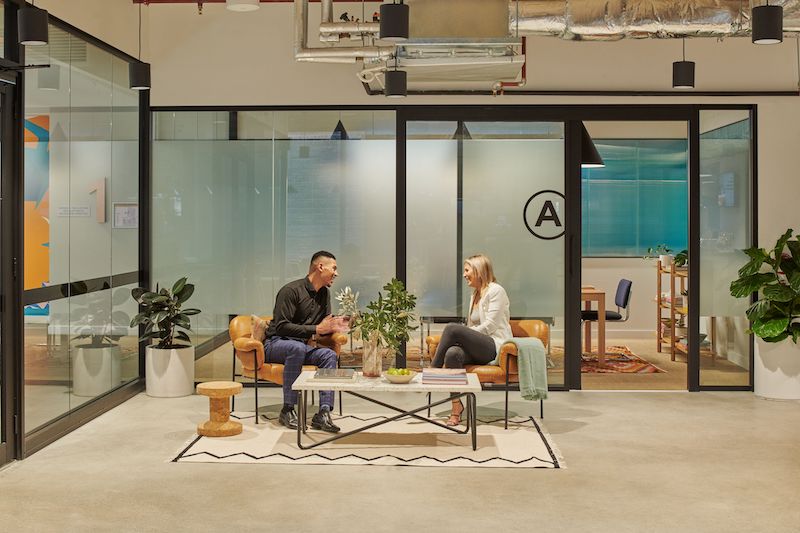Hybrid work and the need for flexibility are creating a shift in where and how we work. Balder Tol, General Manager of Australia and Southeast Asia for WeWork, shares his expertise on trends around the changing nature of work, the purpose and definition of the modern office, and the future of workplaces, where wellbeing and collaboration are priorities.
As humans, we all require connection – even in the workplace. Businesses have the power to facilitate both flexible work and collaboration. But it requires planning and intention. In this Q&A, Balder Tol, General Manager of Australia and Southeast Asia for WeWork discusses why collaboration is the key to boosting mood and motivating employees and key original research about employee engagement and mood with flexible working arrangements.

Balder, tell us a little about your role and how you came to your current position as General Manager for WeWork.
I’ve always been passionate about customer service and hospitality. Born in the Netherlands, I was Airbnb Australia’s first employee in 2012. It was here I started to appreciate the power of a community. Continuing my passion for building communities, I started at Tank Stream Labs (TSL) as General Manager, a technology-focused coworking space located in the heart of Sydney before joining WeWork as the company’s first Australian hire in 2016.
At WeWork, I have the incredible opportunity to build a diverse and engaged community of members, delivering our mission to create an exceptional member experience across our national portfolio. Bringing like-minded people together and being able to elevate an experience is very fulfilling to me. Whether that’s on holiday (Airbnb) or at the office (WeWork), it’s about tapping into our emotions as people and creating a meaningful moment.
Here in Australia, we’re starting to see our cities buzz again and I’m incredibly excited by the changing way of work. We know the uncertainty of the past year has encouraged more companies – particularly large corporates – to opt for flexible working arrangements. Workplace trends we had projected may take 10 or 15 years to realise became reality in under 12 months. We’re seeing more and more businesses looking to adopt hybrid ways of working and hub-and-spoke models, where teams and workforces are distributed across multiple buildings, cities or even countries, in order to provide more options to their employees and de-densify their central HQ. With these new ways of working, when people do come together, it needs to be in convenient and attractive locations.
In what ways have you seen the “modern office” evolve over the years? What standout trends have you noticed in the way offices have changed?
Over 10 years ago, WeWork started reshaping the office sector as we knew it, offering flexible, beautiful spaces to accommodate organisations of all scales. Now more than ever, we’re finding organisations are putting more of a focus on providing a place for their people to meet, collaborate and build culture; a place where employees don’t have to be but want to be.
The role of the office is really being redefined as a hub for innovation and productivity, so we’re working to create collaboration hubs for our members, which showcase how office design is evolving and adapting to be conducive to the activities that can’t be done as successfully at home. A WeWork collaboration hub features more social and breakout meeting spaces, and makes those spaces much more integrated to enhance teamwork and individual productivity. We complement this with areas designed for quiet focus for when employees need to concentrate, free from distractions. Designing workspace in such a highly flexible way allows us to adapt spaces to our members’ quickly, making the adjustment to a new way of working seamless.

How do you define hybrid work?
A hybrid model offers employees both the autonomy of remote work and the benefits of an experience-based work environment. For me, hybrid working is all about flexibility and trust: the model looks different for each organisation, it even varies between roles. Over the last year, what’s interesting is that individuals and companies alike are recognising that remote work is complementary to, rather than a replacement for, in-person collaboration. The vast majority of workers want hybrid in-person/ office work, so that’s pushing companies — especially smaller ones — to be nimble with their office space, and co-working is often the answer.
“Over the last year, what’s interesting is that individuals and companies alike are recognising that remote work is complementary to, rather than a replacement for, in-person collaboration.”
Although working from home can be done and many have enjoyed this opportunity to spend more time with loved ones, balance domestic jobs and spend less time commuting, it is not a long-term sustainable solution for everyone. Remote work has proven to, at times, stifle productivity, collaboration, innovation and wellbeing. The value of the office, therefore, remains intact but as a repurposed space away from home to collaborate with colleagues, and accommodate different working styles and tasks that can’t always be done at home.
How have you seen hybrid working create a shift in where and how we work?
While working from home seems fine in the short term, companies large and small are discovering that long term, we need to be really aware that people thrive when we’re part of a community! We’re already finding that the role of the physical office and its place in the future of work will change. With this emerging trend, we’ll see the physical office becoming a place of creative interaction where we network, workshop, innovate, be mentored, learn: those aspects of work that people missed while working from home.
As a result, WeWork is leaning into its short-term, flexible office space offering, digitising real estate via the launch of new products such as On Demand and All Access set to roll out in Australia later this year. Whether that’s shifting from a single HQ location to a hub and spoke model, finding swing space for the short-term, or giving employees the ability to visit WeWork locations across the country, WeWork’s got a solution.
Can you speak to the ways in which you’ve seen organisations prioritise wellbeing and collaboration? Why have these become priorities?
Looking first at wellbeing, we know the past few months have been incredibly stressful for many people. Remote work has eroded many people’s sense of belonging and further blurred the lines between work and personal life. High productivity throughout the pandemic has also masked an exhausted workforce. A recent study by Microsoft found that one in five global survey respondents say their employer doesn’t care about their work-life balance. Added to this, fifty-four per cent feel overworked and thirty-nine per cent feel exhausted.
Starting a new year, we’re hearing from our members that as they return to our spaces they feel comfortable and trust WeWork is providing spaces that prioritise their wellbeing, with regular opportunities for meaningful connection with other people. More than ever, a strong workplace culture will be about creating experiences for people.
Similarly, collaboration has suffered, and it’s collaboration that drives innovation and creative problem solving. Physical interaction as a result of proximity leads to spontaneous encounters which spark ideation and creativity. These interactions are often held during break periods, before or after meetings, in hallways or at communal amenity points. Daily interactions that move between work-focused and social-focused conversations contribute to overall group cohesion. Without spontaneous encounters, our businesses, our teams, are weakened.
Despite “work” being possible from almost anywhere, most companies are realising that with this, employers are seeking to hold onto their in-person cultures by creating sticky, meaningful experiences their people want to be a part of. As we think about the future of work – how we collaborate, innovate and create, what’s clear is that this can’t be done via Zoom so workspaces will become places for experience-based interaction and organisations will put more of a focus on creating a place for their people, a place where they don’t have to be but want to be.

In terms of collaboration, what has changed in humans’ requirements for connection in the workplace? How can organisations facilitate this?
With persistent home-working stifling productivity and innovation, the pandemic highlighted the role of the office as a critical resource that enables human connection and collaboration. As employees now embrace new levels of flexibility, their expectations of the office are shifting: the workspace has to be optimised for work activities and social interactions, while enabling better balance and work-life boundaries. Looking ahead, the office will need to inspire and motivate employees, keeping them energised, engaged and productive.
At WeWork, our spaces are designed to promote meaningful interactions between people. The workspace interiors blend communal lounge areas with bookable meeting rooms and study pods surrounded by a series of private offices ranging from one person occupancy to full floors designed to accommodate a single-member company. A well-designed workspace is more than just visually appealing—it also creates an experience for people, promoting better collaboration, productivity, comfort and happiness at work.
WeWork research found those who returned to the office 4-5 days a week reported a 54% improvement in mood compared to those who work from home.
How is collaboration the key to boosting mood and employee motivation?
WeWork, in partnership with brightspot strategy, researched the policies and conditions that impact an employee’s performance after returning to the workplace. The study found that morale rose by 40% for people returning to an office space for at least one day per week, and that increased to 54% for those who returned 4-5 days per week.
What’s clear from this is that employees who return to the office after being forced to work from home have shown substantially improved morale and performance. What was even more compelling is that productivity (both individual and collaborative), personal well-being and sense of company culture were all boosted by a return to the workplace. A collaborative workspace that prioritises meaningful interactions through more social and breakout meeting spaces, enhances teamwork and individual productivity. Genuine collaboration also fosters creative processes like brainstorming and design thinking.


1 comment